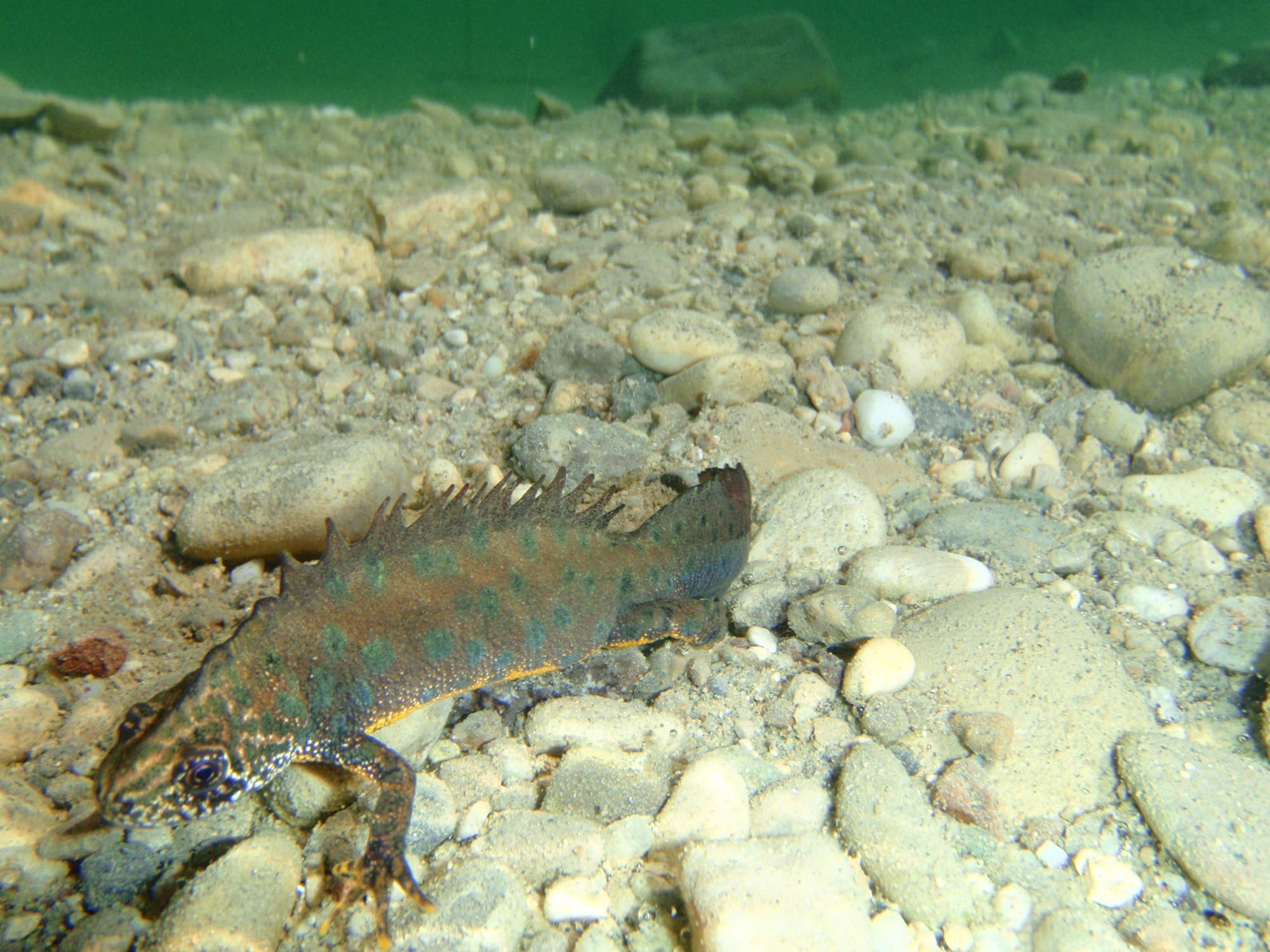
The great crested newt (Triturus cristatus) is the largest domestic newtwhich can be up to 14 cm (male) or 18 cm (female) grows large. The yellow-orange bellywhich is usually associated with large black spots is littered, stands out clearly from the olive to black-brown body ab. In contrast to the female, the male wears a crest on its back. This serrated crest is more pronounced during the mating season and is only interrupted at the root of the tail. Because of the large crest, this newt species is also called the water dragon.
The mating and spawning season of the great crested newt is between mid-March and the end of April and depends on the temperature. For a migration to the spawning waters to take place, a temperature of at least 5 °C and a longer rainy period are necessary. For this reason, the mating and spawning season may be delayed. During the spawning season the water dragons are in permanently standing waterswhich have developed a lush vegetation. On land they prefer Green spaces, wet meadows, deciduous and riparian forests.
Due to habitat destruction and fragmentation as well as fish stocking, the great crested newt is endangered throughout Europe. It is considered a highly endangered species in Austria and is a protected species under the Tyrolean Nature Conservation Ordinance 2006 and the Flora-Fauna-Habitat Directive of the European Union.
The Tyrolean Lech Nature Park is home to the only crested newt occurrence in Tyrol. At a pond in the lower Lech Valley, the great crested newt shares its habitat with two other newt species - Newt (Triturus vulgaris) and Alpine newt (Triturus alpestris) - the habitat.